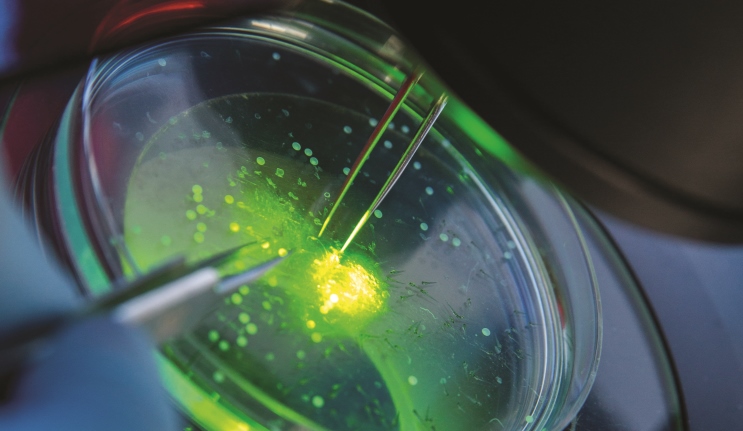
RESEARCH NEWS
The year of light
Light is fundamental to our lives, powering everything from photosynthesis to the internet. As light-based technologies are poised to take on an ever-greater role in our lives, Macquarie’s alumni are at the forefront of the field of photonics.
“Where electronics moves electrical particles (electrons) in wires to convey information, photonics transfers packets of light (photons) along optical fibres, which is then converted to an electronic format [that can be interpreted by researchers and everyday equipment],” explains Professor Michael Withford (PhD 1996), Director of Macquarie’s Photonics Research Centre”
Photonic technologies are used everywhere; from barcode scanners, DVD players and TV remote controls, to telecommunications, eye surgery and medical instruments. In the manufacturing industry they are used for laser-cutting fine parts, such as miniature components in mobile phones and Cochlear hearing implants.
In the past few decades, Macquarie researchers have been responsible for some groundbreaking discoveries that have changed the world, including the foundation work that led to the creation and proliferation of LED lights: preliminary research undertaken by Macquarie alumna Dr Cathy Foley (BSc (Hons)/DipEd 1981, PhD 1985), now chief of CSIRO Materials Science and Engineering, contributed to the development of blue LED lights, technology that received the Nobel Prize for Japanese physicists in 2014.
Today, photonics research at Macquarie explores a huge range of areas; from discovering how light behaves at the nanoscale, to using lasers to create bacteria-resistant medical applications.
“Understanding the nanoworld helps us understand the macro world; biosensing technology researchers are using those nanoscale gold properties to help understand how nanoparticles are taken up by cells,” he adds.
Another exciting area of Macquarie’s photonics research is in terahertz imaging, which uses an exotic part of the spectrum to look inside biological structures.
“The technology allows you to study a leaf inside an envelope and has applications for national security, where packages can be accurately scanned for the presence of drugs and other prohibited biological materials,” Withford says.
Silky glow
Physicist Dr Douglas Little (BTech (Hons) 2005, PhD 2010) is exploring the optical properties of the silk produced by orb-weaver spiders.
His research identified a way to measure the optical properties of the silk, in particular its refractive index, which is a measure of how much light slows down when it travels through a material.
“We now have sufficient precision to measure how the refractive index of spider silks responds to environmental conditions such as temperature, humidity, strain or pH,” Little says.
“This is exciting, as it opens up the prospect of using spider silks in a diverse range of technological applications, including using the silk as a miniature optical fibre that connects optics and electronics; or as chemical, biological and medical sensors.”
“In the future, we may very well be farming optical materials from spiders and other insects, rather than producing them in factories.”